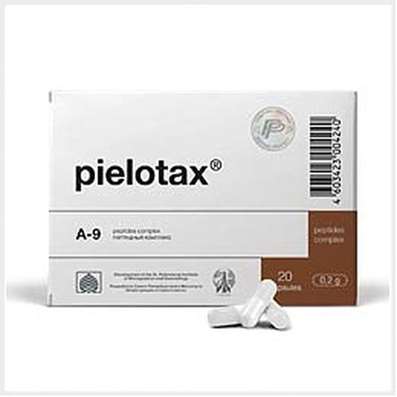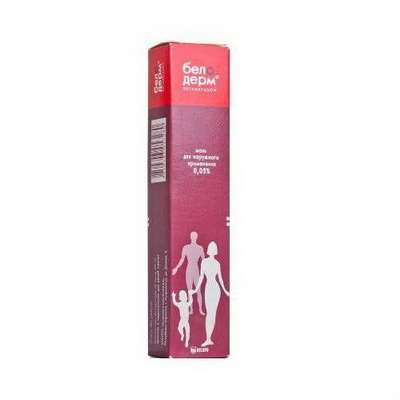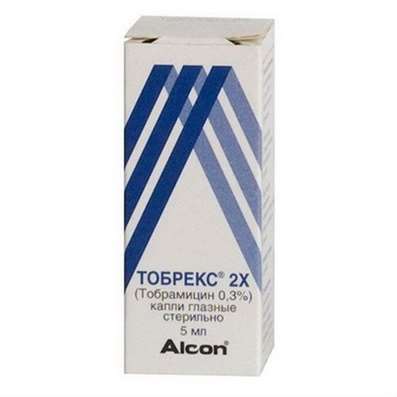Instruction for use: Teraligen
I want this, give me price
Dosage form: coated tablets
Active substance: Alimemazine tartrate
ATX
R06AD01 Alimamazine
Pharmacological group:
Antipsychotic drugs [Neuroleptics]
The nosological classification (ICD-10)
F06.6 Organic emotionally labile [asthenic] disorder: Asthenic disorders; Asthenic conditions; Asthenic disorder; Asthenic state; Asthenic phenomenon; Asthenic-vegetative disturbance; Asthenoadressive disorder; Astheno-depressive disorder; Asthenodepressive state; Asthenoepochondrial phenomena; Asthenoneurotic disorder; Astheno-neurotic state; Hypochondriac and asthenoipochondrial condition; Organic asthenodepressive disorder; Psychoastenopathy disorder
F40 Phobic anxiety disorder: A state of fear; Fear; Phobia; Phobic disorders; Phobias; Anxiety neurosis; Anxiety of anxiety; Obsessive fears; Acute anxiety disorder; Paroxysmal fear syndrome; Feeling of fear; Night Fears
F41.1 Generalized anxiety disorder: Generalized anxiety disorders; Generalized alarm; Phobic neurosis; Anxiety reaction; Anxious neurosis
F41.2 Mixed anxiety and depressive disorder: Depression with anxiety-depressive components; Mixed anxiety-depressive conditions;Anxiety Depression; Anxious and depressing mood; Anxiety-depressive state; Anxious-depressive conditions; Anxiety-depressive syndrome; Anxious-Neurotic Conditions
F44 Dissociative [conversion] disorders: Psychogenic psychosis; Conversion disorder; Dissociative phenomena; Pseudodemency; Conversion symptoms
F45 Somatoform disorders: Psychosomatic disorder; Psychosomatic disorders; Psychosomatic diseases; The state of excitement in somatic diseases; Functional psychosomatic disorders of the cardiovascular system
F45.2 Hypochondriacal disorder: Hypochondriac and asthenoipochondrial condition; Hypochondria; Sesto-hypochondriacal disorders; Hosto-hypochondriacal disorders; Asthenoepochondrial phenomena; Hypochondriacal disorders; Hypochondriac neurosis; Hypochondriacal-senesthetic syndrome
F45.3 Somatoform dysfunction of the autonomic nervous system: Cardioneurosis; Cardiovascular neurosis; Syndrome of neurocirculatory dystonia; Somatovegetative disorder; Somatovegetative complications
F48 Other neurotic disorders: Neurosis; Neurological diseases; Neurotic disorders; Neurotic condition; Psychoneurosis; Anxious-Neurotic Conditions; Chronic neurotic disorders; Emotional reactive disorders
G47.0 Sleep disturbance and sleep disturbances [insomnia]: Insomnia; Insomnia, especially the difficulty of falling asleep; Desynchronosis; Prolonged sleep disorder; Difficulty falling asleep; Insomnia; Short-term and transient sleep disorders; Short-term and chronic sleep disorders; Short or shallow sleep; Disturbance of falling asleep; Sleep disturbance, especially in the phase of falling asleep; Sleep disturbances; Sleep Disorders; Neurotic sleep disorder; Shallow shallow sleep; Shallow sleep; Unsatisfactory quality of sleep; Night Awakening; The pathology of sleep; Postmodern violation; Transient insomnia; Problems with falling asleep; Early Awakening; Early morning awakening; Early Awakenings; Sleep disorder; Persistent insomnia; Difficult to fall asleep; Difficulty falling asleep in children; Difficulty falling asleep; Persistent insomnia; Deterioration of sleep Chronic insomnia; Frequent nocturnal and / or early morning awakenings; Frequent nocturnal awakenings and a feeling of shallow sleep; Night Awakenings
R45.1 Anxiety and agitation: Agitation; Anxiety; Explosive excitability; Internal stimulation; Excitability; Excitation; Excitation acute; Psychomotor agitation; Hyperexcitability; Motor excitement; Cessation of psychomotor agitation; Nervous excitement; Restlessness; Night trouble; Acute stage of schizophrenia with agitation; Acute mental agitation; Paroxysm of excitation; Overexcitation; Increased excitability; Increased nervous excitability; Increased emotional and cardiac excitability; Increased agitation; Mental arousal; Psychomotor agitation; Psychomotor agitation in psychoses; Psychomotor agitation of an epileptic nature; Psychomotor paroxysm; Psychomotor fit; Symptoms of Excitation; Symptoms of psychomotor agitation; The state of agitation; A state of anxiety; Excitation status; A state of heightened concern; The state of psychomotor agitation; Conditions of anxiety; Excitation conditions; The state of excitement in somatic diseases; Excitation level; Feelings of anxiety; Emotional arousal
Composition
Tablets covered with a film membrane 1 tab.
active substance:
alimamazine tartrate 5 mg
auxiliary substances: sugar milk (lactose); silicon dioxide colloidal; refined sugar (sucrose); wheat starch; tapioca (tapioca starch); talc; magnesium stearate
membrane film: hypromellose; macrogol 6000; titanium dioxide; coloring Raspray R110 pink; talc
Description of dosage form
Tablets: covered with a film shell of dark pink color, with a squeezed symbol on one side and a strip on the other; sides and edges without damage.
Pharmachologic effect
Pharmacological action - antispasmodic, antipsychotic, antihistamine, antitussive, antiemetic, hypnotics.
Pharmacodynamics
Antipsychotic agent (antipsychotic), has antihistamine, spasmolytic, serotonin blocking and moderate α-adrenoblocking action, as well as antiemetic, hypnotic, sedative and antitussive effect. The antipsychotic effect is due to the blockade of dopamine D2 receptors of the mesolimbic and mesocortical system. Sedative action is due to blockade of adrenoreceptors of the reticular formation of the brainstem; antiemetic action - blockade of D2-receptors in the trigger zone of the vomiting center; hypothermic action - blockade of dopamine receptors of the hypothalamus. The beginning of the effect - after 15-20 minutes, the duration of the action - 6-8 hours.
Has a low antipsychotic activity, therefore, in acute psychotic conditions is ineffective.
Due to its good tolerability, it is used in children's, adolescent and gerontological practice.
Pharmacokinetics
Quickly and completely absorbed, Tmax in the plasma - 1-2 hours after ingestion. Binding to plasma proteins is 20-30%, T1 / 2 is 3.5-4 hours. It is excreted by the kidneys - 70-80% in the form of a metabolite (sulfoxide) for 48 hours. The onset of the effect is in 15-20 min, duration of action - 6-8 hours.
Indications of the preparation Teraligen
neuroses and neurosis-like conditions of endogenous and organic genesis with predominance of the senestopathic, hypochondriacal, phobic and psycho vegetative disorders;
psychopathy with asthenic and psychoasthenic disorders;
anxiety-depressive states in the framework of borderline and vascular diseases;
senestropical depression;
somatized mental disorders;
state of anxiety and anxiety in somatic diseases;
sleep disorders of different genesis;
allergic reactions (symptomatic treatment).
Contraindications
hypersensitivity;
angle-closure glaucoma;
hyperplasia of the prostate;
severe liver and kidney disease;
Parkinsonism;
myasthenia gravis;
Reye's syndrome;
simultaneous use of MAO inhibitors;
pregnancy;
the period of breastfeeding;
children under 7 years.
With caution: chronic alcoholism, if there is an indication in the anamnesis of complications with the use of preparations phenothiazine series; obstruction of the neck of the bladder, predisposition to urinary retention, epilepsy, open-angle glaucoma, jaundice, suppression of bone marrow function, arterial hypotension.
Application in pregnancy and lactation
Contraindicated in pregnancy. For the duration of treatment, breastfeeding should be discontinued.
Side effects
The drug is usually well tolerated. Side effects are extremely rare and are not very pronounced.
From the nervous system: drowsiness, lethargy, fast fatigue, arising mainly in the first days of admission and rarely requiring withdrawal of the drug; paradoxical reaction (anxiety, excitement, "nightmarish" dreams, irritability); rarely - confusion, extrapyramidal disorders (hypokinesia, akathisia, tremor); more frequent sleep apnea, increased convulsive activity (in children).
From the sense organs: blurred vision (paresis of accommodation), noise or ringing in the ears.
From the CVS: dizziness, lowering blood pressure, tachycardia.
From the digestive system: dry mouth, atony GASTROINTESTINAL TRACT, constipation, loss of appetite.
On the part of the respiratory system: dryness in the nose, pharynx, increase in the viscosity of bronchial secretions.
From the urinary system: atony of the bladder, urine retention.
Other: allergic reactions, oppression of bone marrow hematopoiesis, increased sweating, muscle relaxation, photosensitivity.
Interaction
Strengthens the effects of narcotic analgesics, hypnotics, anxiolytic (tranquilizers) and other antipsychotic (neuroleptics) drugs, as well as drugs for general anesthesia, m-holinoblokatorov and hypotensive drugs (requires dose adjustment).
Weaken the action of derivatives of amphetamine, m-cholinostimulants, ephedrine, guanetidine, levodopa, dopamine. When combined with ethanol and drugs, suppressing the functions of the central nervous system - increased oppression of the central nervous system, with antiepileptic drugs and barbiturates - lowering the threshold of convulsive readiness (requires dose adjustment).
Beta-adrenoblokatora increase (mutually) the concentration of alimamazine in plasma (possibly a marked decrease in blood pressure, arrhythmia).
Weaken the effect of bromocriptine and increase the concentration of prolactin in the serum.
Tricyclic antidepressants and anticholinergic drugs increase the m-cholinoblocking activity of alimamazine.
MAO inhibitors (concurrent use is not recommended) and other phenothiazine derivatives increase the risk of arterial hypotension and extrapyramidal disorders.
With the simultaneous administration of alimamazine with drugs that inhibit bone marrow hematopoiesis, the risk of myelosuppression increases.
Hepatotoxic drugs increase the manifestation of hepatotoxicity of the drug.
Dosing and Administration
Inside.
The daily dose is divided into 3-4 doses.
Adults-5-10 mg / day (hypnotic effect); 60-80 mg / day (anxiolytic action). At psychotic conditions - 0,2-0,4 g / day.
Children from age 7 are prescribed according to the following scheme (depending on age and body weight): 2.5-5 mg / day (hypnotics); 5-20 mg / day (as a symptomatic treatment of allergic reactions); 20-40 mg / day (anxiolytic action). In psychotic states, an increase in the daily dose to 60 mg / day is possible.
Overdose
Symptoms: increased adverse reactions, depression of consciousness.
Treatment: symptomatic.
Special instructions
With prolonged treatment, it is necessary to systematically carry out a general blood test, evaluate liver function.
Can mask the ototoxic effect (tinnitus and dizziness) of shared drugs.
Increases the need for riboflavin.
To prevent distortion of skin scarification test results for allergens, it is necessary to cancel the drug for 72 hours before allergological testing.
During treatment, false-positive pregnancy test results are possible.
Against the background of treatment should not engage in activities that require increased concentration. During the treatment should not drink alcohol.
Release form
Tablets, film-coated, 5 mg. In contour cell packs of 10 or 25 pcs. In a pack of cardboard 1, 2 or 5 packages.
Conditions of leave from pharmacies
On prescription.
Storage conditions for Teraligen
In the dark place at a temperature of no higher than 25 ° C.
Keep out of the reach of children.
Shelf life of the preparation Teraligen
3 years.
Do not use after the expiry date printed on the package.

 Cart
Cart





